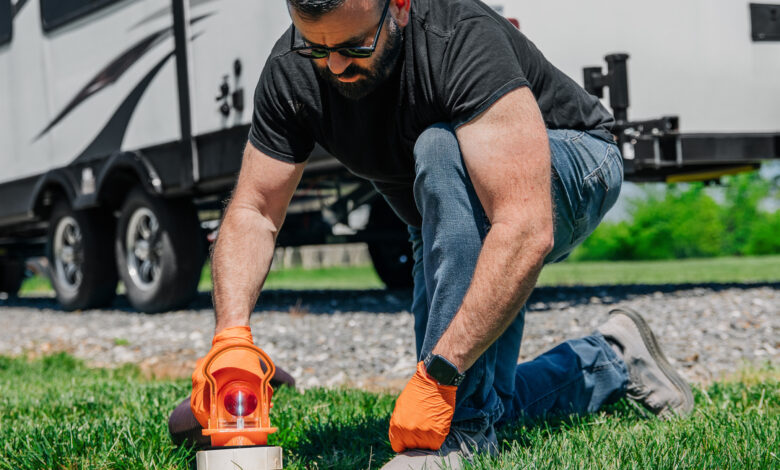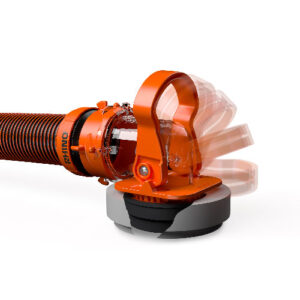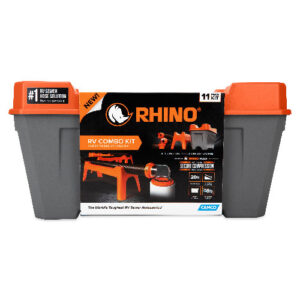Making the Most of Your Parts & Accessories Department
How to capture the attention of RV buyers for parts and accessories they don’t just need, but want, to buy.

Keeping an eye out for new products in the market that are sure to sell in your parts and accessories department is a must, and knowing what to stock and how to display those items is just as important. RV PRO talked with Lisa Schoder, chief marketing officer of Camco, for that advice.
What 2025 trends are you seeing with parts and accessories for RVs? What are RVers looking for most and why?

Key trends I’m seeing are around ease of use and reliability. This comes from both seasoned RVers as well as newbies. At Camco, we take this to heart and make sure every product that we offer delivers trusted performance and is simple to use. That way, RVers can quickly get their site set up and begin to enjoy the experience.
What was Camco most proud of last year? What are you expecting for 2025?
We saw moderate growth in 2024 that aligned with the industry overall. We continue to be proud of our product innovation with five new patents granted and multiple patent applications. It’s the new product that excites our RV community and shows how Camco is always at the leading edge of what RVers need.
The outlook for 2025 is positive! At the Tampa RV SuperShow [in January], you could sense this feeling from consumers. They were there to check out the latest products, and they were ready to buy.
I see new cohorts entering the RV lifestyle as more of an opportunity than a challenge. Camco is that trusted partner to educate and equip them for their RV getaways.
What should dealers pay attention to when stocking in their retail stores? How does Camco work with dealers to ensure they get inventory that moves?
 We see our dealers as key partners. Their success is our success. Since we offer consumers end-to-end solutions for enjoying their RVs, this gives us greater insight into what they really need and also how we can continuously improve their experience. Everything that Camco produces is engineered with the utmost quality, durability and safety in mind. We don’t believe in cutting corners, which means that dealers can be confident when they stock our products. We also have a very active social media and YouTube audience that allows us to continuously educate and engage consumers on the latest solutions, driving them to purchase from their dealer.
We see our dealers as key partners. Their success is our success. Since we offer consumers end-to-end solutions for enjoying their RVs, this gives us greater insight into what they really need and also how we can continuously improve their experience. Everything that Camco produces is engineered with the utmost quality, durability and safety in mind. We don’t believe in cutting corners, which means that dealers can be confident when they stock our products. We also have a very active social media and YouTube audience that allows us to continuously educate and engage consumers on the latest solutions, driving them to purchase from their dealer.
How can dealers make their parts and accessories department more profitable and visually appealing?
Dealers have a prime opportunity to engage with consumers and establish trusted relationships. When people purchase an RV, dealers can guide them through the essentials and offer valuable bundles, including high-demand Camco accessories like water hoses, leveling blocks and Eaz-Lift hitches, ensuring they have the necessary tools for safe RVing. The dealership’s retail space provides the perfect environment to create visually appealing showroom displays that showcase top-selling products, while educating buyers on their benefits. During service visits, dealers can upsell complementary items such as freshwater accessories or sanitation solutions. Additionally, they can set up attractive waiting area displays featuring seasonal or promotional products, encouraging impulse purchases.
What new products is Camco offering that dealers should stock? Why are those products going to be popular with RVers?
 In Tampa, we previewed new products launching this spring, such as the Rhino Sewer Hose Combo Kit, RV Sewer Adapter PRO and the RV Sewer Extender PRO with built-in LED, that are intuitive solutions that excited consumers. Each piece of the Rhino Combo Kit is functional, with the storage container itself engineered to be part of the hose support system. It’s a perfect upgrade for long-time RVers and a great all-in-one value for those new to RVing. Last year we launched TST PRO enzyme-powered RV tank treatment that breaks down waste and tissue in eight hours versus days. Our Rhino Tote Tanks are a must-have, and this year we have launched an accessory kit that attaches directly to the Rhino Tote Tank for organization and ease of use. We’ve enhanced our PowerGrip RV Dogbones to incorporate both circuit analyzers and surge protection into a single solution that is ETL [Electrical Testing Laboratories] certified. We feel it is imperative to rely on third-party certifications for products as important to the safety and functionality of your RV as the power source. FasTen Big Blocks were fast-movers in Tampa, as was the EvoFlex2 fabric-reinforced drinking water hose. And always use TastePure drinking water filters to ensure water safety and great taste!
In Tampa, we previewed new products launching this spring, such as the Rhino Sewer Hose Combo Kit, RV Sewer Adapter PRO and the RV Sewer Extender PRO with built-in LED, that are intuitive solutions that excited consumers. Each piece of the Rhino Combo Kit is functional, with the storage container itself engineered to be part of the hose support system. It’s a perfect upgrade for long-time RVers and a great all-in-one value for those new to RVing. Last year we launched TST PRO enzyme-powered RV tank treatment that breaks down waste and tissue in eight hours versus days. Our Rhino Tote Tanks are a must-have, and this year we have launched an accessory kit that attaches directly to the Rhino Tote Tank for organization and ease of use. We’ve enhanced our PowerGrip RV Dogbones to incorporate both circuit analyzers and surge protection into a single solution that is ETL [Electrical Testing Laboratories] certified. We feel it is imperative to rely on third-party certifications for products as important to the safety and functionality of your RV as the power source. FasTen Big Blocks were fast-movers in Tampa, as was the EvoFlex2 fabric-reinforced drinking water hose. And always use TastePure drinking water filters to ensure water safety and great taste!
What else should our readers know about making their parts and accessories department a success?
The best advice I have is to keep current with RV trends and new product releases. The dealer plays such an influential role in an RVer’s experience. Trust is built by recommending high-quality gear fit for the consumers’ needs.


